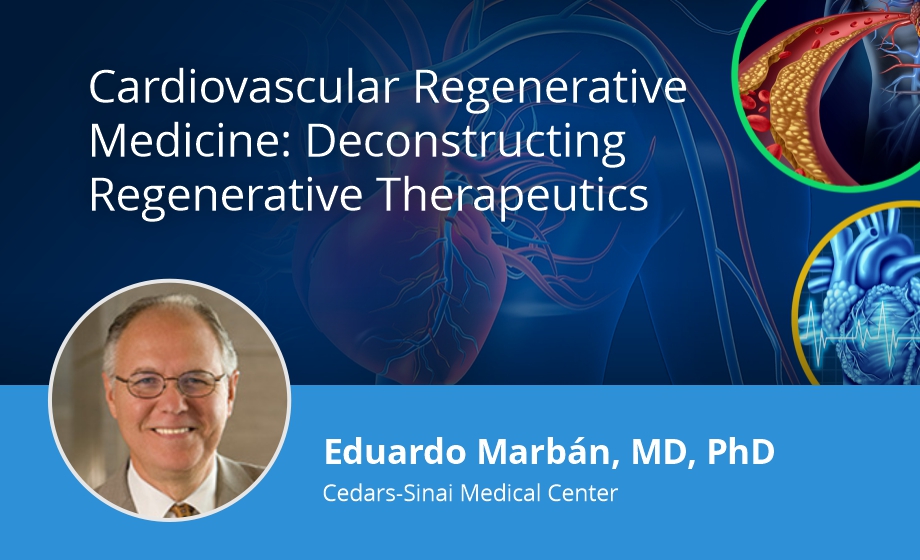Q&A Report: Cardiovascular Regenerative Medicine: Deconstructing Regenerative Therapeutics

The answers to these questions have been provided by:
Eduardo Marbán, MD, PhD
Executive Director
Smidt Heart Institute
Cedars-Sinai Medical Center
Are extracellular vesicles naturally produced or is it an inflammatory product?
Exosomes are produced by all eukaryotic cells at all times; their composition and quantity can change, however, under stressful conditions. The composition of exosomes under different cell delivery conditions will undoubtedly change, but it has not been rigorously studied in vivo
Was the effect of the Y RNA secreted by exosomes directly tested?
The Y RNA was tested outside exosomes, as a synthetic RNA in liposomes.
How was the blood pressure measured?
We use a tail cuff in mice.
In the HOPE first trial, the ejection fraction (EF) looked like it tanked after 3 months and it was stronger after the 3 months of 2nd injection. Have you looked at a longer time point? And are there any issues with arrhythmias?
The first HOPE trial was single dose and used fewer cells. HOPE-2 used multiple sequential IV injections. The EF benefit was apparent both at 6 and 12 months (after 2 and 4 doses, respectively). No arrhythmias were seen in HOPE-2